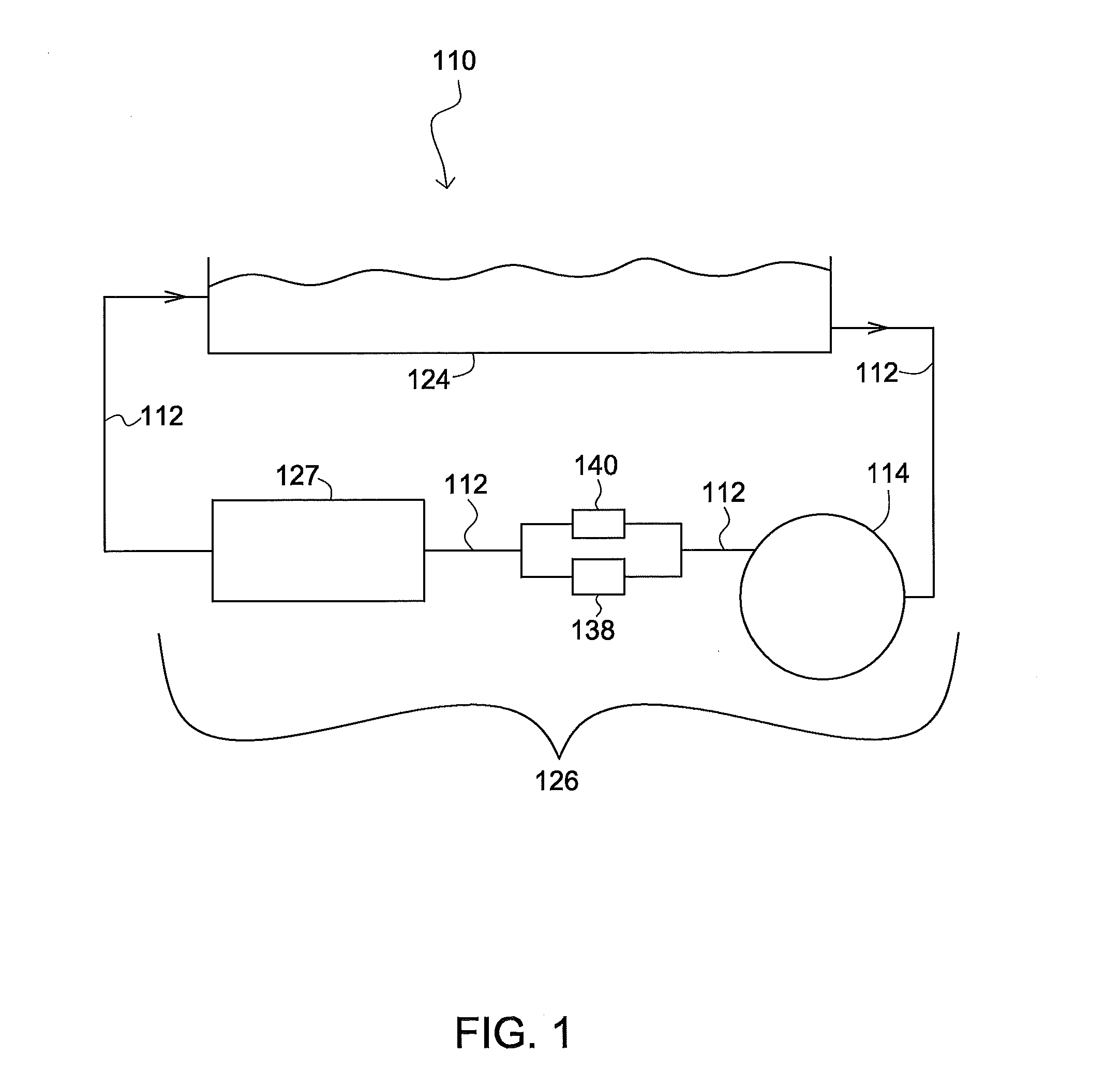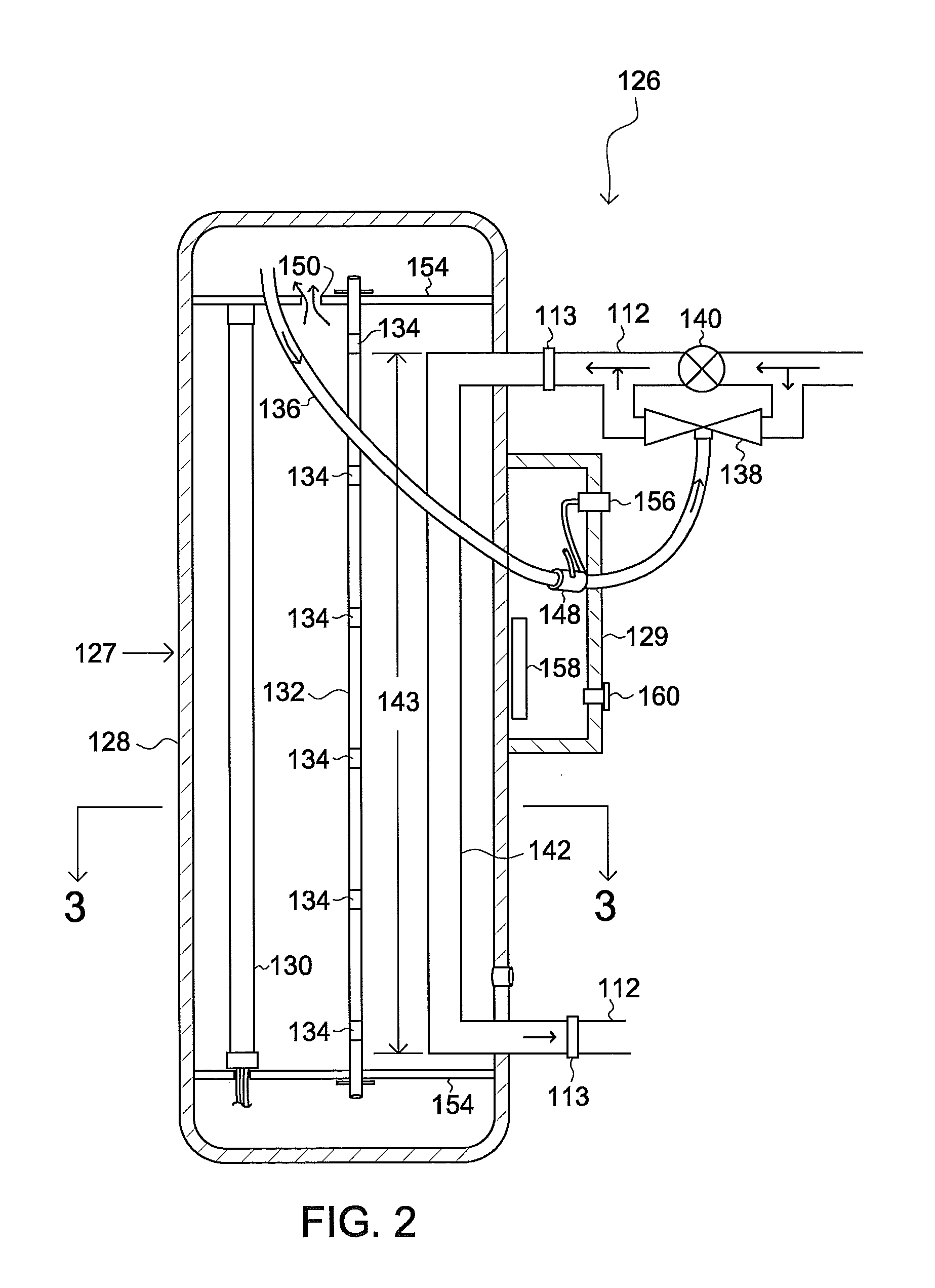Water treatment device and methods of use
a water treatment device and water treatment technology, applied in the nature of treatment water, multi-stage water/sewage treatment, therapy, etc., can solve the problems of water quality degrading to unacceptable levels, water loss to evaporation, and substantial water loss
- Summary
- Abstract
- Description
- Claims
- Application Information
AI Technical Summary
Benefits of technology
Problems solved by technology
Method used
Image
Examples
first embodiment
[0060]The magnetic rod 132 of the first embodiment is a tube within which resides permanent magnets 134. The tube can comprise a polymeric material or non-magnetic metal. Non-limiting examples of polymeric materials include thermoplastic organic polymers, thermosetting organic polymers and combinations thereof. Non-limiting examples on non-magnetic metals include copper and its alloys (such as brass) and aluminum to name a few. The number of magnets can vary depending on the size of water treatment device. While not wanting to be limited by example, the number of permanent magnets per tube commonly can be from about 4 to about 12 or more commonly from about 6 to about 10. In some examples the number of magnets per tube is typically six, more typically about eight and yet more typically about ten. Other embodiments may use electromagnets in place of or in addition to permanent magnets.
[0061]The flow cell of the first embodiment water treatment device is a glass tube having an inside ...
second embodiment
[0077]The second embodiment water treatment device 226 comprises a housing 260 within which reside a ballast 266, an electric gas pump 267, and a gas treatment chamber 268. The ballast is a universal B224PWUV-C ballast, and is used to power a UV radiation source (not shown in FIG. 5, shown as element 230 in FIG. 6) that resides in the gas treatment chamber.
[0078]The electric gas pump of the second embodiment water treatment device is a Tetra Whisper® 150 aquarium air pump. The electric gas pump delivers air under positive pressure to the gas treatment chamber through a fluid delivery tube 269 at a flow rate of at least 28 liters per hour (L / hr). Flow rates of 300 L / hr or greater may be required for some applications. A barbed fitting 272 penetrates the chamber housing 270 and allows gas to enter the gas treatment chamber from the fluid delivery tube. A fluid exit port 271 is adapted to allow gas under positive pressure to exit the water treatment device, whereupon treated gas typica...
PUM
| Property | Measurement | Unit |
|---|---|---|
| Wavelength | aaaaa | aaaaa |
| Wavelength | aaaaa | aaaaa |
| Wavelength | aaaaa | aaaaa |
Abstract
Description
Claims
Application Information
 Login to View More
Login to View More - R&D
- Intellectual Property
- Life Sciences
- Materials
- Tech Scout
- Unparalleled Data Quality
- Higher Quality Content
- 60% Fewer Hallucinations
Browse by: Latest US Patents, China's latest patents, Technical Efficacy Thesaurus, Application Domain, Technology Topic, Popular Technical Reports.
© 2025 PatSnap. All rights reserved.Legal|Privacy policy|Modern Slavery Act Transparency Statement|Sitemap|About US| Contact US: help@patsnap.com



